
Platypezidae is a family of true flies of the superfamily Platypezoidea. The more than 250 species are found worldwide primarily in woodland habitats. A common name is flat-footed flies, but this is also used for the closely related Opetiidae which were formerly included in the Platypezidae.

The Opetiidae is a family of true flies of the superfamily Platypezoidea, one of two families commonly called flat-footed flies. The family contains only five extant species in two genera, Opetia from the Palearctic region and Puyehuemyia from Chile in South America. Several fossil genera have been assigned to the family, but many of these are likely to belong elsewhere in the Platypezoidea. Lonchopterites from the Early Cretaceous Lebanese amber and Electrosania from the Late Cretaceous New Jersey amber seem likely to be closely related to modern opetiids.
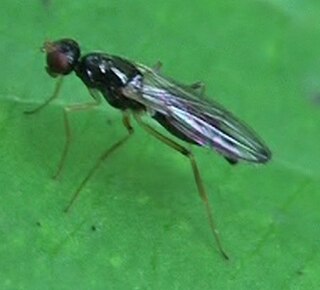
The Strongylophthalmyiidae are a small family of about 80 species of slender, long-legged flies, the majority of which occur in the Oriental and Australasian regions. They are divided into two genera, the monotypic Southeast Asian genus Nartshukia Shatalkin, 1993 and Strongylophthalmyia Heller, 1902. The relationships of the group are obscure; formerly the genus Strongylophthalmyia was classified with the Psilidae, and some recent classifications place it within the Tanypezidae. Little is known of their biology, but many species seem to be associated with rotting bark.
Ironomyiidae is a small family of flies in the order Diptera. Historically, they had been included in the family Platypezidae, and includes three extant species within the single extant genus Ironomyia endemic to Australia and a number of extinct fossil genera from North America and Asia extending back to the Early Cretaceous.
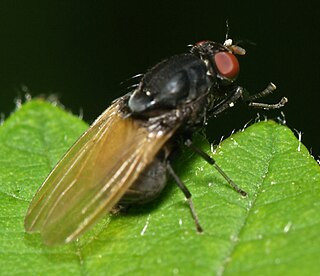
Minettia is a genus of small flies of the family Lauxaniidae. They have almost worldwide distribution, is one of the most species rich genera of the family with more than 120 described species. The Palaearctic is the most diverse with some 56 described species. The genus is divided into 3 subgenera.
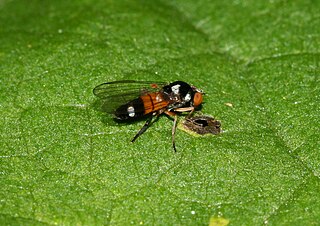
Callomyia is a genus of flies in the family Platypezidae. Some species can be found in Belgium.
Neoparoecus is a genus of small flies of the family Lauxaniidae.
Aulogastromyia is a genus of small flies of the family Lauxaniidae.
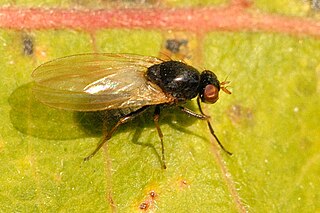
Calliopum is a genus of small flies of the family Lauxaniidae.
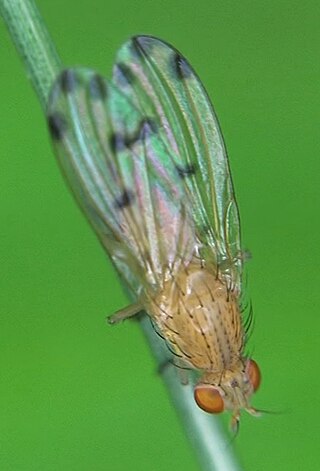
Meiosimyza is a genus of small flies of the family Lauxaniidae.
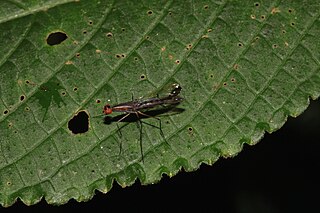
The family Nothybidae contains only the genus Nothybus, a group of colorful and elongated flies. The family has been recently revised.

Lauxania is a genus of small flies of the family Lauxaniidae.

Lindneromyia is a genus of flat-footed flies. There are at least 70 described species in Lindneromyia.

Polyporivora is a genus of flat-footed flies. There are about eight described species in Polyporivora.
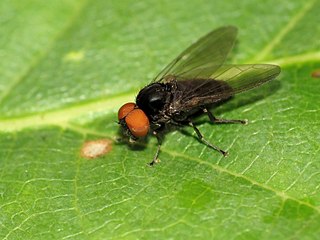
Platypeza is a genus of flat-footed flies. There are at least 30 described species in Platypeza.

Strongylophthalmyia are a genus of slender, long-legged flies, the majority of which occur in the Oriental and Australasian regions.

Agathomyia is a genus of flat-footed flies in the family Platypezidae.
Microsania is a genus of flat-footed flies in the family Platypezidae.

Paraplatypeza is a genus of flat-footed flies in the family Platypezidae.
Tenuia is a genus of flies in the family Pseudopomyzidae.













